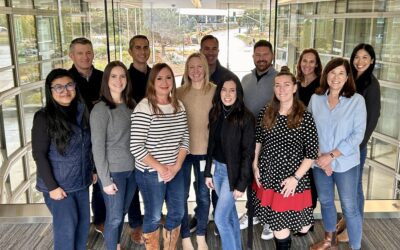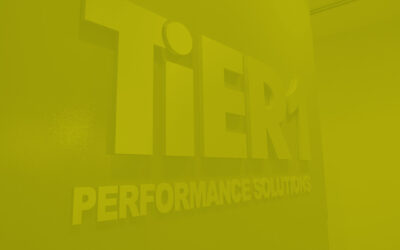The impact of generative artificial intelligence (AI) on the future of work is a topic of growing debate. The evolutions we’re seeing are accelerating daily, which can be simultaneously empowering and overwhelming. Amidst the innovation, curiosity, and speculation, one thing is certain: our digital work environments will significantly change in the coming year. Even if we readily embrace this emerging transformation, how do we separate the hype from the real potential for our specific teams and organizations? We could certainly ask ChatGPT (ok, we did, and got a decently compelling answer). However, we believe the key to future of work success lies within people.
Embracing that exact sentiment, we’ve gathered insights from TiER1 consultants at the forefront of planning and optimizing technology investments. We’ve uncovered these key insights for leaders.
Center on strategy.
Don’t chase technology innovation or you may find yourself constantly on the run, shares Emanuel Lewis, a technology expert focused on enabling learning, performance, and development. What’s cutting edge this week could be old school by Monday. Understand your priorities and processes first and then develop your digital strategy. This allows you and your people to align your innovation discovery and evaluation to the technologies that ultimately lift your strategy.
Invest in setting a data strategy, cleaning up your data, and educating your team on the benefits of AI now, shares Katie Camargo, our strategic planning capability lead. Organizations that have both incentives and support structures in place for their people to adopt this new technology will win the long-term game. If you find yourself behind right now, now is the time to start.
Demystify AI for you and your teams.
Discard the limiting belief that you aren’t “techy,” shares Stephanie Roberto, our resident Microsoft 365 expert. Technology will continue to get easier and easier for “non coders” to use. The complexity of building sophisticated solutions will lessen over time. Push yourself to build.
Make this the year of the AI pilot study, shares Shaun Slattery, our systems adoption capability lead. With your team, go play, explore, and experiment with generative AI. See what tasks it does well and poorly. See where it’s useful in offloading tedious work, supporting brainstorming, synthesizing information, etc. Once you see where it can add value, start re-structuring your team processes to capitalize on that capability and share your learnings with others!
As a team, create team agreements regarding technology, shares Denianne Gardner, Microsoft 365 Teams consultant. It’s not always about picking the right technology. Agreeing as a team how you will use it will have the greatest impact—and the greatest potential for knowledge sharing across the team. (There is no digital replacement for intentional, ongoing team alignment!)
Remember, AI is data-driven, not magic!
Heed the adage, ‘garbage in, garbage out’ shares research director Walter Warwick, PhD. While AI technologies might be surprisingly fluent, they are only as good as the data used to train them. Give a large language model access to, for example, millions of Reddit posts and it will become conversational, but it might say some strange things. Conversely, a predictive model trained on well-curated data like surveys, HRIS data, or even enterprise-level OKRs (objectives and key results) can provide a wealth of insight that might otherwise be missed using more common analytical techniques. AI cannot create meaning from nothing: good data is the foundation of good AI.
Explore AI as an extension of your team.
Think about AI as a teammate, shares Jerry Hamburg, our AI strategist. Unlike many prior technologies, which required user training before starting, consider turning first to generative AI to understand how it can help you. Talk about counter-intuitive! For example, “You are my expert assistant. I’d like to learn more about conversing with you. Walk me through steps to do so in a succinct manner—pausing after each step to see if it is helpful to me.” Try it, and don’t take each step at face value. Ask for more clarity, simplicity, or another option. Easy to do, harder to make a habit.
Position AI as the team member doing the grunt work, freeing time for other members of the team to do more interesting value creation types of work, shares Carol Henriques, organization and talent strategy director. Why spend an hour writing a complex and sensitive email, when you can spend 10 minutes on that email by having ChatGPT write a draft, and use the other 50 minutes to pursue a new customer opportunity or support a team member with a new challenge?
Never stop learning.
Think beyond ChatGPT, shares Ian Cooley, our digital strategy expert. It’s important to acknowledge and understand the diverse array of AI models (text-to-text, text-to-image, image-to-text, multi-modal, highly-tuned, task-specific, etc.), each with its unique functionalities, inputs, and outputs, to seamlessly integrate them into business workflows. A deep comprehension of this diversity in AI models is key for businesses to innovate and apply generative AI solutions to their business.
Whether you are just getting started or are well into your AI journey, significant transformation lies ahead. Consider these tips to set you and your team up for success as you navigate the pivots that are inevitable along the way.
If you’d like to explore your organization’s opportunity spaces and support your people in activating your AI strategies, reach out to us in the form below.




